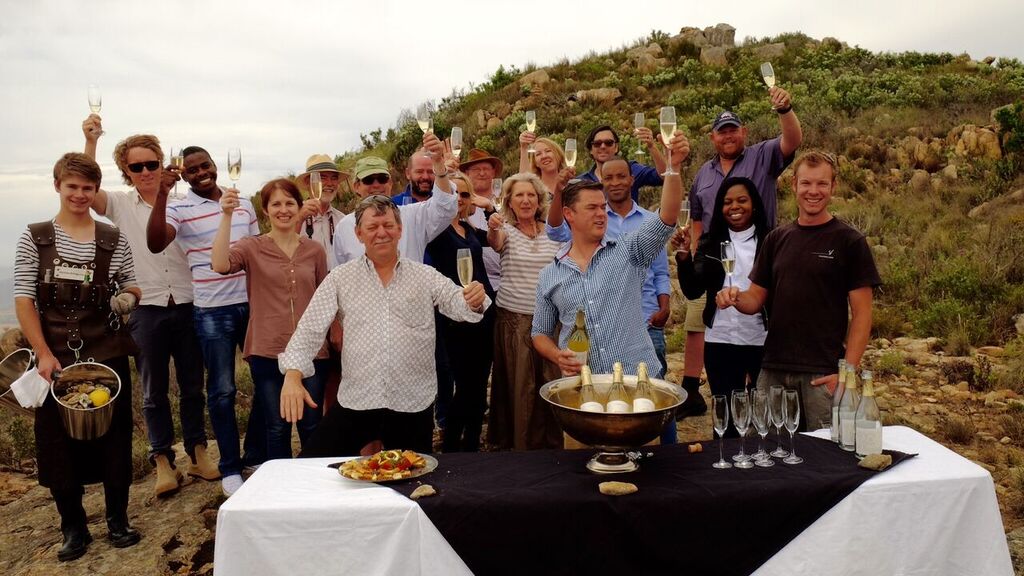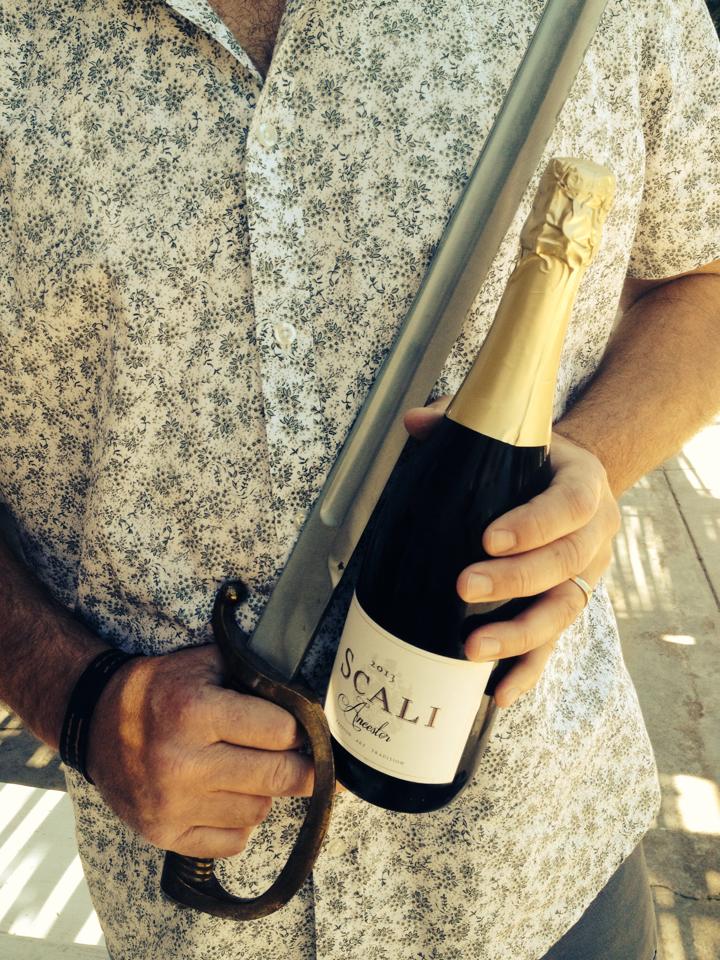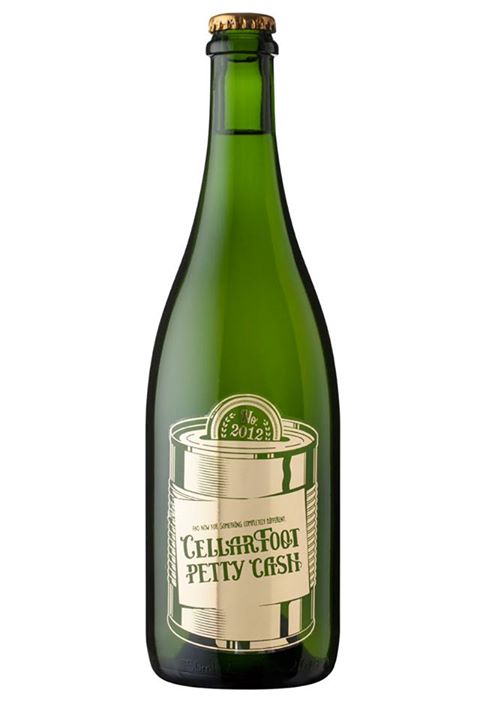The way of the ancestors
A group of men wearing a hotchpotch assortment of aprons gathers under the blue Paardeberg sky. They’re excited about something. At the centre, Matthew Copeland, winemaker of Vondeling, opens a sparkling wine bottle with a flourish. I get my glass under the stream just in time.
The aprons can be explained. Today is the wine farm’s annual potjie competition. A patch of land outside the tasting room has been taken over by local winemakers with their families, bubbling pots and wines from all over the region.
The sparkling wine in my glass, however, made in a style known as Mèthode Ancestrale (MA), is a lot more intriguing. It’s a winemaking tale that stretches back to the early 15th century, to Limoux in France; and it is purported to be the very first method of making sparkling wine.
For the Vondeling Rurale, Chardonnay grapes were sourced from a single block on a southwest-facing slope of the Paardeberg mountain (decomposed granite soils). The name is said to be the term used before it became recognised by the French Appellation d'Origine Contrôlée (AOC) as Mèthode Ancestrale.
“I must have been crazy to tackle it the way I did,” says Matthew. “I couldn't find any coherent winemaking advice on the subject and I pretty much went into it blind.
 Winemaker Matthew Copeland recently launched the Vondeling Rurale 2014 on a mountain peak on the wine estate's farm.
Winemaker Matthew Copeland recently launched the Vondeling Rurale 2014 on a mountain peak on the wine estate's farm.
Like Méthode Champenoise, Méthode Ancestrale is also bottle fermented; the key difference is that it goes directly from the tank into the bottle without the ‘luxury’ of making a base wine. “Essentially it’s a single ferment and not a two-step process, that’s what makes it tricky.”
The single, continuous fermentation is not the only thing that separates the two winemaking practices. The fruit is also picked at a riper stage than for the base wine used to make Champagne.
The wine begins its natural fermentation in the tank. From here it’s the winemaker’s job to watch and wait until just the right amount of sugar remains. Once satisfied with the level, the still fermenting wine is bottled and capped.
“You need to measure your sugar levels constantly,” stresses Matthew. “The window of opportunity is very small. Too much sugar and your bottles become bombs; too little and they don't go pop when you open them.”
Luckily, with the capricious nature of the operation (you could be bottling at two in the morning), Matthew had family to call on for help. Both his dad and brother pitched in. “The three-step hand bottle application takes six exhausting hours and only results in about 1 200 bottles.”
Matured on the lees for 16 months before dégorgement, the Rurale was hand-riddled over a period of a month, then dégorged and topped using wine from the same vintage – in contrast to the use of a sweetened dosage in the making of Champagne.
“The single ferment allows you to pick the grapes at a potential alcohol of about 12 per cent. The need to re-ferment your base wine in Champagne requires a far lower initial alcohol and consequently about two weeks less ripening time. Champagne therefore has a higher acidity, far less varietal character and is basically less expressive of its terroir... Some may argue this point but few would dispute that in our warm climate flavours develop more slowly than our sugars and an extra few weeks of ripening can make a whole lot of difference.”
There must be something in the air in the Paardeberg – or perhaps in its granite soils – because there are a number of other wineries in the area making Méthode Ancestrale too.
On another blue-skied afternoon in the area, just down the road from Vondeling, I find myself seated at a large oak table in Scali’s historic manor house (the De Waals have been working the vines here for five generations). Married winemaking team Willie and Tania de Waal sit across from me, portraits of their forefathers bearing down on us from the walls. It seems a fitting place to try a wine labeled Scali Ancestor.

“Our approach is to make it as naturally as possible, which results in a bubbly with a golden colour, and ripe grape, nuts and yeast flavours,” says Willie.
“The grapes are hand-harvested at optimal ripeness when there’s enough sugar and still enough acidity for good balance.”
To make the Scali Ancestor, Chenin Blanc grapes are crushed and pressed, and the resulting juice cooled down to 7°C. Once the lees settles, the juice is racked (keeping it cool) and the process is repeated once more before spontaneous fermentation kicks in. “Fermentation is slow and kept at 13°C, till it reaches 35g/l of RS, then we cool it back to around 7°C and bottle the fermenting juice under crown closures,” explains Willie. “The bottles are stored in a cool room to complete fermentation in the bottle. After a year on the lees, we riddle the bottles, then dégorge and cork them with a wire hood. No dosage is added and the final wine has virtually no sulphites, as the CO2 protects it.”
Another Paardeberg patriot, Adi Badenhorst of AA Badenhorst Family Wines says they had a couple of explosions in the making of their MA: “A few too many that made the Ancestral project the most expensive project in the Swartland in the last 200 years!”
Adi used Chenin Blanc, Verdelho and Muscat de Frontignan for his MA blend. Chenin and Verdelho because he ‘quite liked the idea of them’ and Muscat for ‘its breeding and nobility’. “It's truly a noble, ancient variety. It's like a pigeon from Tom Lock’s loft; races in small flocks but always clocks in first. What came first, man or Muscat? That is the question…”
Yet another Paardeberg winery has been cooking up bubbly bombs. At Lammershoek, previous winemaker Craig Hawkins made a MA from Hárslevelü and Chenin Blanc, calling it ‘Petty Cash’.

Staying in the Swartland, Mullineux Wines are also dabbling in the ancient winemaking craft. “It’s difficult because the pressure is determined by how far the natural yeast wants to ferment and therefore is unpredictable,” says winemaker Andrea Mullineux. “The first year we tried it we used recycled glass, plus the yeast happened to be strong that vintage. We lost about half of the bottles.”
Using Clairette Blanche, Andrea explains that the grape ripens at a very low potential alcohol and that the finished product maintains plenty of flavour.
“Wine must always be exciting, and making it naturally is a way to ensure that it has its own unique personality.”
Is this the stirring of a new kind of revolution for the Swartland? I get the feeling that an official Méthode Ancestrale route here could be a rather explosive idea!
– Malu Lambert